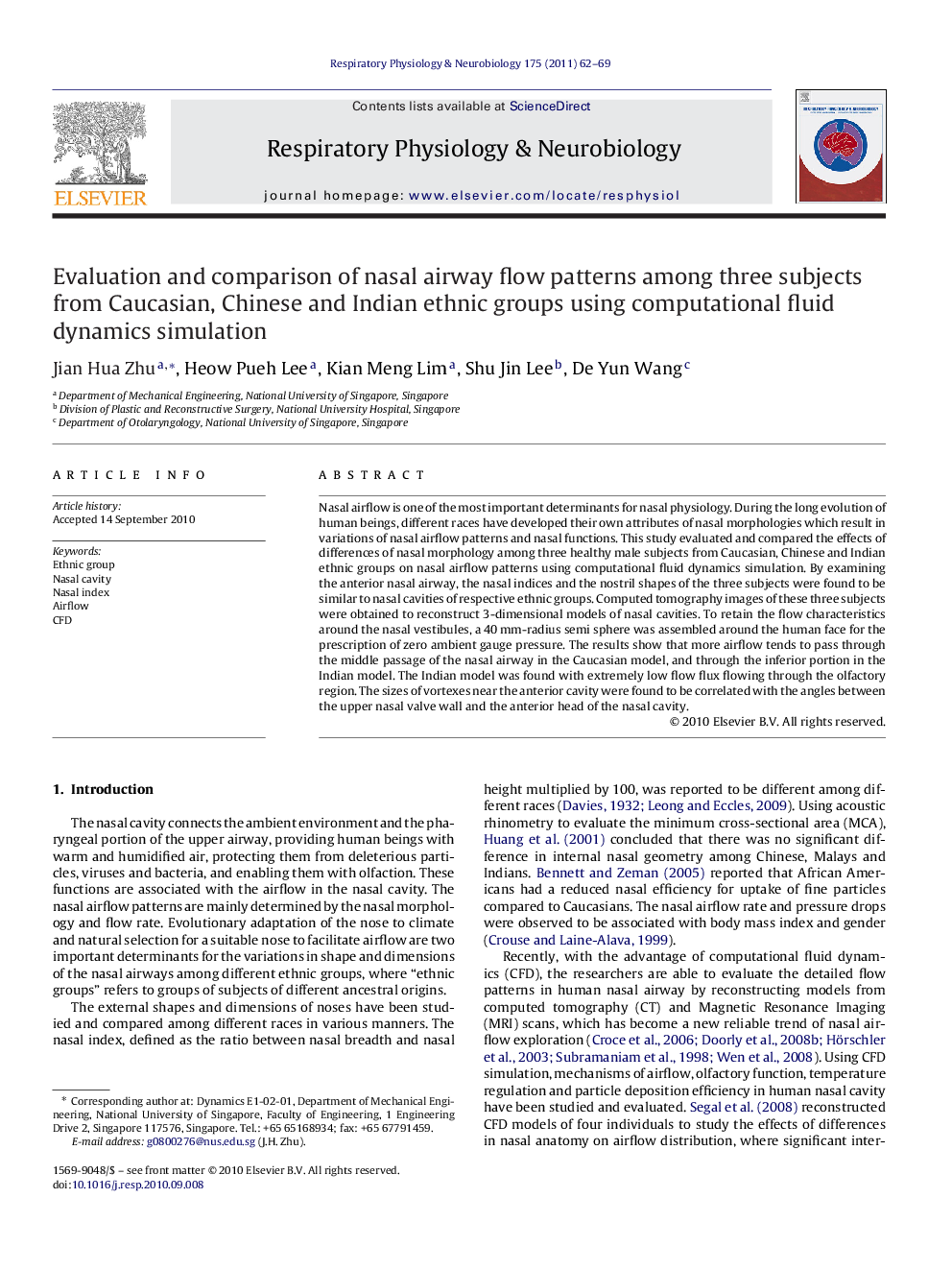| Article ID | Journal | Published Year | Pages | File Type |
|---|---|---|---|---|
| 5926560 | Respiratory Physiology & Neurobiology | 2011 | 8 Pages |
Nasal airflow is one of the most important determinants for nasal physiology. During the long evolution of human beings, different races have developed their own attributes of nasal morphologies which result in variations of nasal airflow patterns and nasal functions. This study evaluated and compared the effects of differences of nasal morphology among three healthy male subjects from Caucasian, Chinese and Indian ethnic groups on nasal airflow patterns using computational fluid dynamics simulation. By examining the anterior nasal airway, the nasal indices and the nostril shapes of the three subjects were found to be similar to nasal cavities of respective ethnic groups. Computed tomography images of these three subjects were obtained to reconstruct 3-dimensional models of nasal cavities. To retain the flow characteristics around the nasal vestibules, a 40Â mm-radius semi sphere was assembled around the human face for the prescription of zero ambient gauge pressure. The results show that more airflow tends to pass through the middle passage of the nasal airway in the Caucasian model, and through the inferior portion in the Indian model. The Indian model was found with extremely low flow flux flowing through the olfactory region. The sizes of vortexes near the anterior cavity were found to be correlated with the angles between the upper nasal valve wall and the anterior head of the nasal cavity.
